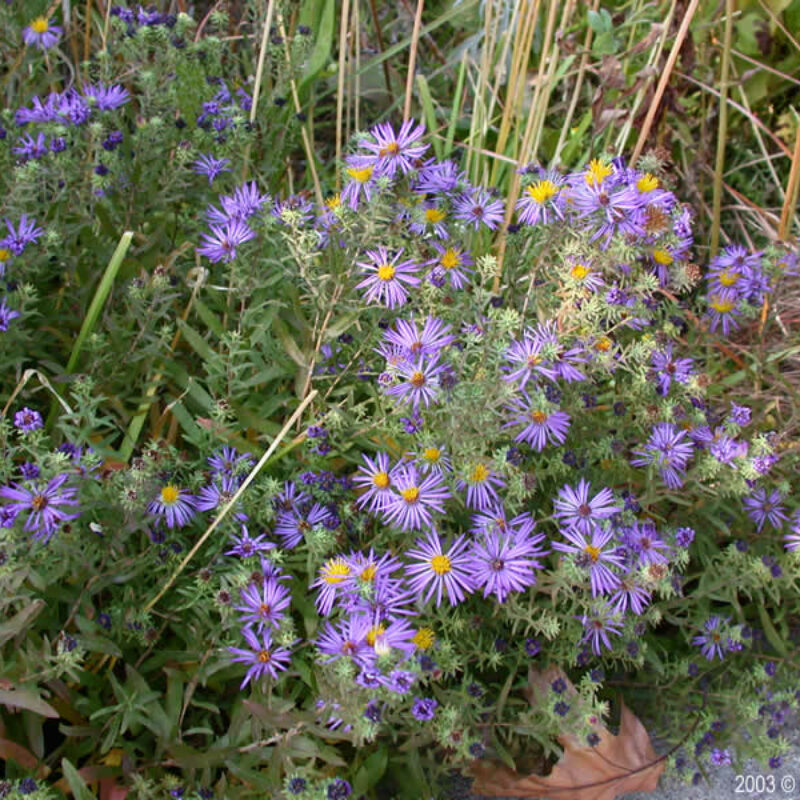Aromatic AsterSymphyotrichum oblongifolium
a.k.a. Aster oblongifolius
Aromatic Aster is one of the last flowers to bloom in fall. It spreads via underground rhizomes and prefers sun and dry soils.
USDA symbol: SYOB
General Information
| Plant Type | Forb |
|---|---|
| Height | 1 to 2 feet |
| Light Exposure | Sun, Part Sun |
| Soil Moisture | Dry, Medium |
| Bloom Color | Purple |

Tolerances
| Flooding / Inundation Tolerance | Low |
|---|---|
| General Resilience | 7 |
| Salt Tolerance | Low |
| Stress Tolerance | Alkaline Conditions, Drought Tolerant, Fire Tolerant, General Disturbance |
Pollinator Value: High
| Bloom Months | August to October |
|---|---|
| Larval Host of | Bees, Moths |
| Specific Pollinators Hosted | Numerous bee species, Schinia septentrionalis |
| Pollinator Benefit | Insect Pollinated, Provides Nectar, Stem Nesting, Supports Generalists |
Project Planning
| Project Type | Boulevard, Rain Garden, Shoreline Buffer |
|---|---|
| Coefficient of Conservatism | 7 |
| Herbivore Sensitivity | Low |
| Lifespan | Perennial |
| Rate of Spread | Slow |
| Soil Stabilization | Shallow |
| Vegetative Reproduction | Clonal |
Range
| County | Big Stone, Blue Earth, Carver, Chippewa, Clay, Cottonwood, Dakota, Douglas, Fillmore, Goodhue, Hennepin, Houston, Jackson, Kandiyohi, Lac qui Parle, Le Sueur, Lincoln, Lyon, Murray, Nobles, Olmsted, Otter Tail, Pipestone, Polk, Pope, Ramsey, Redwood, Rock, Sibley, Stevens, Swift, Traverse, Wabasha, Washington, Winona |
|---|---|
| Ecoregion | Driftless Area, Lake Agassiz Plain, North Central Hardwood Forests, Northern Glaciated Plains, Northern Lakes and Forests, Western Cornbelt Plains |
| Approximate Eco Province | Eastern Broadleaf Forest, Laurentian Mixed Forest, Prairie Parkland, Tallgrass Aspen Parklands |
